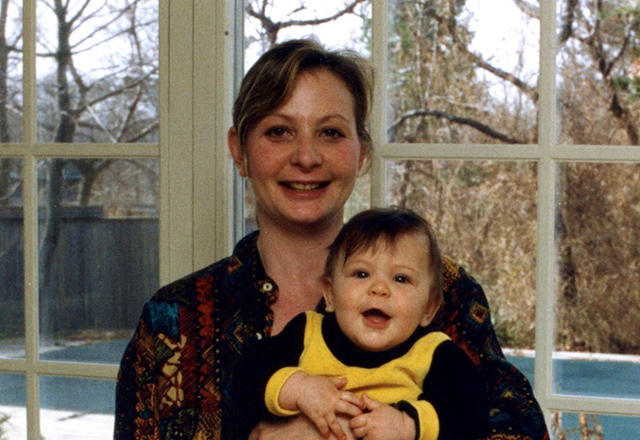The Metro ride from Foggy Bottom to Bethesda took just about an hour door to door. Each morning, on my way to my first science internship at the National Institutes of Health, and each evening, back to my dorm at George Washington University, I spent my rides reading The Emperor of All Maladies by Siddhartha Mukherjee. My mom was halfway through listening to it on tape and said it was a must-read. An artist by trade, my mom has always been a scientist at heart. She and I would study biology at our kitchen table, tapping our feet as we wrote songs to memorize the steps of mitosis. As an expert in color, she instilled a sense of creativity and wonder through our joint canvas paintings in our backyard, which ultimately led me to riding the Red Line to the NIH.
Nearly seven years later, in my fourth year of graduate school, my mother is reading Siddhartha Mukherjee’s newest release, The Gene. My parents wanted a better understanding of what I do while at the bench and the associated science jargon to understand my thesis project in more detail. Though my commute is shorter now that I’m back at Johns Hopkins, I am also reading The Gene on my daily shuttle rides. In part five, “Through the Looking Glass,” Mukherjee discusses what genes tell us about human beings and how we can use genetics to understand our history. My mom was particularly struck by his discussion of the mitochondria. She was fascinated by the history of their discovery, the mitochondria’s unique genetics, and how this information has been used to study the evolution of human beings.
At our kitchen table, as we drew out the cell on her artist’s pad in every color Sharpie you could imagine, my mom and I once memorized that the mitochondria are the powerhouse of the cell. Mitochondria’s claim to fame as the “mighty” organelle comes from their ability to generate adenosine triphosphate from oxygen and other nutrients, which the cell then uses to power various metabolic activities. Interestingly, mitochondria have their own genomes, containing 37 genes. To account for this unique organelle’s origin and genome, one theory is that mitochondria originated from an ancient bacterium that formed a symbiotic relationship with another single-celled organism; the bacterium used the cell’s nutrients and resources and in return provided the cell with energy.
Much of our genetic diversity results from the fact that our genes are present in duplicate, and crossing-over between chromosomes can occur in reproductive cells. Crossing-over is the phenomena in which unlinked genes can actually “swap” regions of DNA from the paternal to maternal chromosome by recombination events, creating a patchwork chromosome that is not exactly identical in sequence to either parent’s DNA. On the other hand, the mitochondrial genome contains a single copy of each gene, and recombination is a rare event. Therefore, the mitochondrial genome and mutations are passed down, from generation to generation, nearly intact! We inevitably carry, as Mukherjee describes, “a photograph of each of our ancestors in our wallets,” within the genomes of these powerful organelles. Another characteristic of mitochondrial DNA that makes it especially useful for tracing human genetics is that it is specifically maternally inherited.
How is this known? Mukherjee makes this important distinction: While the genetic material of the human embryo comes from paternal and maternal sources (sperm and egg), the cellular material actually comes from the egg, exclusively. This includes the mitochondria. Therefore, all humans inherit their mitochondria from their mothers (who inherited their mitochondria from their mothers, etc.).
With this information, scientists—notably Allan Wilson—uncovered startling information about our origins. First, they noticed the human mitochondrial genome was smaller and less diverse than that of chimpanzees. While this is surprising given that the chimpanzee population is much smaller than the human population, these findings indicate that humans are younger and more homogenous than chimpanzees. The mitochondria, in a sense, serves as a genetic clock. Further analysis of genetic variation led to the discovery that humans emerged exclusively from a small region in sub-Saharan Africa about 100,000 to 200,000 years ago. Even more incredible, Mukherjee concludes that human beings can trace our mitochondrial lineage to a single human female who existed in Africa about 200,000 years ago. How cool is that?
Not only has my mom passed down her creativity, love of reading and curiosity about the world, but she has also given me my mitochondria and their genome, the “mity” genome. I think back to learning about the mitochondria as the powerhouse of the cell, and how this biological understanding puts women in a new and powerful light.

Wondering if the author has seen this recent PNAS paper where they identified rare families that have paternal inherited mitochondrial DNA: https://www.pnas.org/content/115/51/13039.long
Comments are closed.